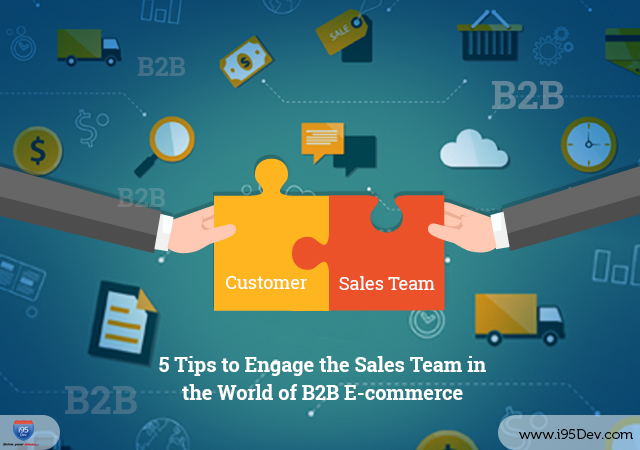Take heed – the future is uncertain for any e-commerce store run by a business-to-business (B2B) organization that forgets its sales personnel.
They are the front-runners and hard-hitters of your B2B venture – they’re the ones who have to talk fast, deal with tantrums and moods, believe in the company and broaden your base of clients. Remember, you can’t have happy clients if you have no clients, and you can’t have any clients if you don’t have sales.
So what do you need to do to integrate these valuable and hard-working members of your team into the Shangri-La of satisfaction and maximum productivity? This, while ensuring you stay current by adopting technology like e-commerce. Read on to find out.
1) Divide and Conquer
Because of the dynamic nature of sales and relationships, and the cumbersome process of rearranging points of contact, nurturing them, and sustaining client relations after the sale, the responsibility of the sales team often grows into any available space. Just like it’s important to defragment your hard drive on your computer, this jungle too needs to be tamed from time to time. One option is to segment your customers into categories or levels based on say the level of engagement required. This makes it easy for your sales representative in charge to offload some of this responsibility to e-commerce store like nurturing a client, making it easy for clients to access updates and product information online, and more.
2) Embrace new tools
Platforms like Magento are revolutionising e-commerce on the B2B front, and it’s important to be aware of one’s options, as well as one’s competition. The sales team needs to be on the ball where technology and innovation are concerned, because they are the face of the goings on behind the scenes. A sales team that is comfortable with both jargon and simplified explanations, and that is familiar with the technologies used to make everyone’s lives easier – projects simplicity and reliability. Hence spend some time educating your sales team the advantages of adopting new technology (e-commerce here) and train them to expedite the adoption.
3) Communicate successes and failures
In a broader sense, every sale is but a series of experiments in human behaviour. The team comes up with various innovative pitches and ways to make your brand stand out, giving the best services that you can offer. Similar experiments can, and are carried on the e-commerce store.
As with any experiment, it’s important to get feedback on even the smallest of tweaks so that the good can be amplified and the bad trimmed down. With the sales team on the field and constantly interacting with your customers, ask your sales team to constantly take feedback both on their online and offline experiments. At the same time, share the feedback that you receive on your e-commerce store with them helping them improve.
4) To commission or not to commission?
The eternal question is often hard to answer, so sometimes, it’s important to take a step back. Some COOs feel that the sales team is not directly involved with the sale for orders that come through the e-commerce system. Therefore, according to them, no commission should be paid.
One should understand that the decision on commissions can quickly and directly impact how the sales team views the e-commerce system. If the sales team views the e-commerce engine as competition, it’s easy for a bias to creep in. Soon, they will consciously or subconsciously begin to discourage their customers from using the system. The end result? A negative impact on the return on your e-commerce investment.
Our advice – give commission. It’s a healthy motivator.
5) Build brand and customer base together
While e-commerce is great for dispatching orders and scaling up, your brand is built by people, not software. Explain to your sales team the critical role they have in creating the culture associated with your brand name amongst the clientele. This is an important responsibility – the initial (often touted as the final by that old adage ‘First impression is last impression’) perception of your brand is entirely decided by the face that your sales executive puts on. By comparison, the design and UX of your e-commerce setup matter, but are clearly so much more impersonal.
Capitalise on this added value that your sales team can bring. Make them feel and embrace the power of interpersonal relations.
We hope you learnt something useful about managing a healthy sales team from this article. What strategies do you employ to engage with your sales team? Do share your thoughts in comments below.


















